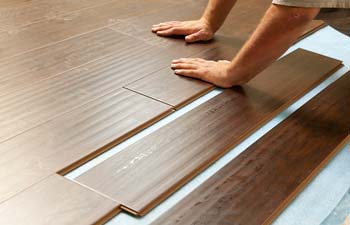Shop At Haya: Your Ultimate Shopping Guide
Discover the best shopping tips, trends, and deals for a smarter buying experience.
Floors That Roar: Choosing Your Perfect Soundtrack Underfoot
Discover how to choose the perfect flooring that matches your vibe! Step into style and sound with our ultimate guide to floors that roar.
The Ultimate Guide to Flooring Materials and Their Sound Profiles
Choosing the right flooring materials for your home goes beyond aesthetics; it's also about understanding their unique sound profiles. Different materials can absorb, reflect, or transmit sound in various ways, influencing the acoustics of your space. For instance, carpet is known for its ability to dampen noise, making it a popular choice for bedrooms and living areas. In contrast, hardwood and laminate flooring can create a more vibrant sound due to their density and surface material, but they may also amplify foot traffic noise. Here’s a quick overview of common flooring materials and their sound characteristics:
- Carpet: Excellent sound absorption.
- Hardwood: Moderate sound reflection; lively ambiance.
- Ceramic Tiles: Hard surfaces that reflect sound.
- Vinyl: Good at absorbing sound while being durable.
Understanding these sound profiles can help you make an informed decision on which flooring materials best suit your lifestyle and needs. If you live in a busy household or have young children, carpets or acoustic underlays may significantly reduce the noise that travels through your home, creating a quieter environment. On the other hand, if you’re aiming for a more contemporary feel with hardwood flooring, consider complementing it with area rugs to help manage the sound levels. Ultimately, the choice of flooring should harmonize with the overall acoustics of your space, striking a balance between aesthetics and functionality.

How to Choose the Right Flooring for Your Lifestyle and Sound Preferences
Choosing the right flooring for your home involves considering your lifestyle and sound preferences. For active families, durability is key, so options like hardwood, laminate, or luxury vinyl tiles that can withstand wear and tear are worth considering. On the other hand, if you live alone or with pets, you might prioritize aesthetics over strength, leading you to options such as elegant carpet or stylish tiles. Evaluate the traffic levels in each room and think about how much maintenance you are willing to commit to when selecting your flooring.
Additionally, understanding your sound preferences is essential in creating a comfortable living environment. For those who cherish quiet spaces, soft flooring materials such as carpet or cork can significantly reduce sound transmission. In contrast, if you prefer a more open atmosphere, consider using hard surfaces like hardwood or porcelain tiles, supplemented with area rugs to balance acoustics. Remember to also assess insulation properties, as effective soundproofing can dramatically enhance your home's ambiance.
What Flooring Options Minimize Noise and Maximize Comfort?
When it comes to choosing flooring options that minimize noise and maximize comfort, it is essential to consider materials that provide both sound absorption and a soft feel underfoot. Carpet is a classic choice, as its fibers naturally absorb sound and provide a warm, cushioned surface. In addition to traditional carpets, modular carpet tiles offer versatility in design and can also be replaced easily if damaged. Another excellent option is cork flooring, which is not only eco-friendly but also possesses natural sound-dampening properties. Its resilience and softness make it a comfortable choice for any room.
For areas where moisture may be a concern, consider using luxury vinyl planks (LVP) or laminate floors with an underlayment that promotes sound insulation. These innovative flooring solutions mimic the look of hardwood while providing durability and easy maintenance. When layered with suitable padding, they can effectively reduce noise transmission between levels. Ultimately, selecting the right flooring involves balancing aesthetics, comfort, and sound control, ensuring that your living space remains serene and inviting.